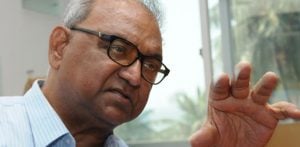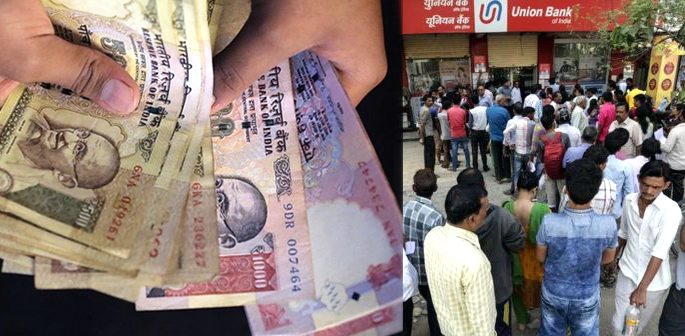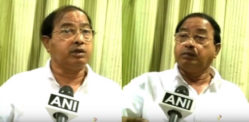new notes of denominations Rs 2,000 and 500 were launched by the Indian government
Since the announcement from Modi’s government to abolish money in the form of Rs 1,000 and 500 notes in India, the move has led to anger, frustration and chaos around various parts of the country.
Especially, among low-income traders, farmers, daily-wage workers, transporters, eatery owners and similar sections of the Indian society whose livelihood has been hit badly, since they completely dependent on cash for trading as opposed to plastic money.
Serpentine queues outside ATMs were witnessed across India with cash-strapped consumers waiting to get some money in hand to purchase essential commodities and carry out their daily expenses.
Indian Banks have found it extremely problematic to meet the humongous demand for notes in exchange for the banned Old High Denomination (OHD) notes of Rs 1,000 and 500.
The All India Bank Employees Association (AIBEA) asked bank management on November 14 2016, for additional infrastructure and support staff.
Meanwhile, new notes of denominations Rs 2,000 and 500 were launched by the Indian government.
According to the Reserve Bank of India, these high-security notes have features that make them harder to fake compared to the scrapped notes of Rs 1,000 and 500.
To help our readers, especially living abroad who may have the banned currency, we have selected some important questions and respective answers given primarily by the Reserve Bank of India with regards to the ban.
How much time do I have to exchange the notes?
The scheme closes on 30 December 2016. The OHD banknotes can be exchanged at branches of commercial banks, Regional Rural Banks, Urban Cooperative banks, State Cooperative Banks and RBI till 30 December 2016.
For those who are unable to exchange their Old High Denomination Banknotes on or before December 30 2016, an opportunity will be given to them to do so at specified offices of the RBI, along with necessary documentation as may be specified by the Reserve Bank of India.
I am living in the UK with these notes, what can I do?
Banks in the UK like ICCI, State Bank of India, Punjab National Bank and Baroda Bank will not accept notes to be deposited locally.
Indian currency cannot be sold abroad for example, in the UK. It must be exchanged in India.
Therefore, the options you have are as follows.
- You will need to travel to India to convert the money at an airport or currency exchange or deposit it into an account in India
- Securely post the money to a relative or friend in India who can do the exchange or deposit it for you
- Send the money with a friend or relative whom you authorise to deposit in an account (see above) or convert for you at an exchange
Note that there is a limit to how much money you can bring to India, which is Rs 25,000. If you bring more money than this amount, it would be considered illegal.
There could be special allowances made for people abroad who cannot exchange their money by the given date of 30 December 2016. However, there is no official statement on this.
I have money in India but not there currently, what should I do?
If you have OHD banknotes in India but you are not in the country you may authorise in writing enabling another person in India to deposit the notes into your bank account.
The authorised person has to come to the bank branch with the OHD banknotes, the authority letter given by you and a valid identity proof (Valid Identity proof is any of the following: Aadhaar Card, Driving License, Voter ID Card, Pass Port, NREGA Card, PAN Card, Identity Card Issued by Government Department, Public Sector Unit to its Staff).
I am a Non-Resident Indian (NRI) and hold NRO account, can the exchange value be deposited in my account?
Yes, you can deposit the OHD banknotes to your NRO account in India. But you will have to do it yourself or authorise someone.
Can I withdraw from ATM in India?
It may take a while for the banks to recalibrate their ATMs. Once the ATMs are functional, you can withdraw from ATMs up to a maximum of Rs 2,000/- per card per day up to 18 November 2016. The limit will be raised to Rs 4,000/- per day per card from 19th November 2016 onwards.
Can I withdraw cash against a cheque in India?
Yes, you can withdraw cash against withdrawal slip or cheque subject to ceiling of Rs 10,000/- in a day within an overall limit of Rupees 20,000/- in a week (including withdrawals from ATMs) for the first fortnight i.e. up to 24 November 2016.
Can I make use of electronic banking in India?
You can use NEFT/RTGS/IMPS/Internet Banking/Mobile Banking or any other electronic/non-cash mode of payment.
Where can I get more information on this scheme?
Further information is available at www.rbi.org.in.






























































